
- In this report we have put numbers to the rain of renewable energy macroprojects in Hego Euskal Herria. On the map drawn by the data, Navarre remains red alive and Álava concentrates 75.4% of the central energies that companies want to make in the CAV. The projects do, however, foresee that most of the energy generated in Álava goes to Bizkaia. The Alavese territory, on the other hand, is a treasure for biodiversity and food sovereignty in the Basque country.
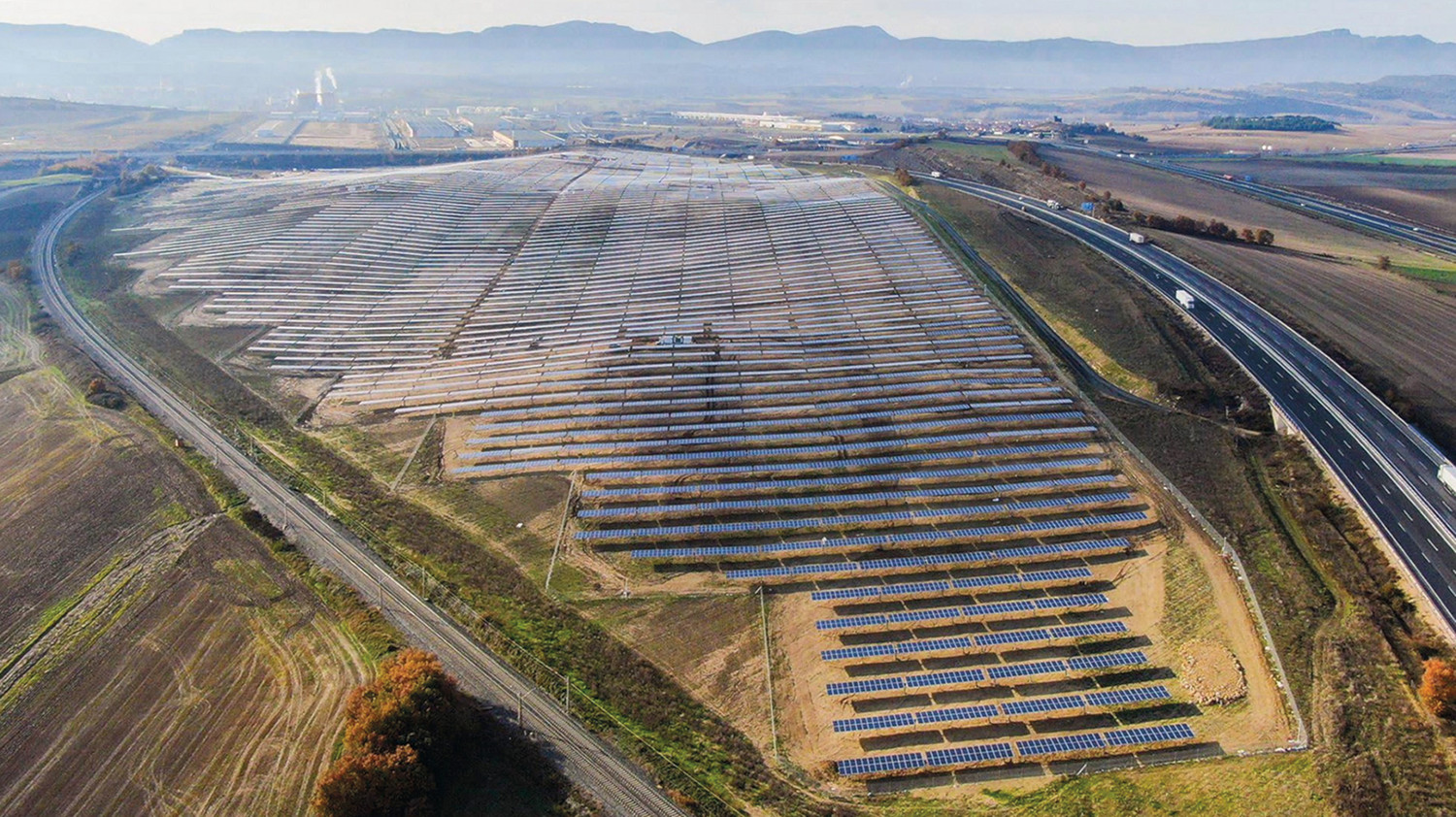
We are experiencing a new wave of macro-projects in the Basque Country, among which those linked to renewable energies have tightened the accelerator in recent years. It is not easy to know how many are, for example, the case of Solaria: All the media talked about the three projects of the PV plant that it intends to build in Álava, until a PP parliamentarian asked the Basque Government that they are 25. This article is based on the monitoring of data from renewable energy macroprojects carried out by the Araba Bizirik movement and the Free Mountain of Álava.
Currently there are 61 wind power plants in Hego Euskal Herria, 57 of them in Navarra and 70 projects in progress, 31 of them in Navarra
Currently there are 61 wind power plants operating in Hego Euskal Herria (including 1,487 windmills). Of these, 57 are from Navarra (1,385 windmills), 2 from Álava (68 windmills) and 2 from Bizkaia (35 windmills). The first plants have been in operation since 1996 and many of the wind power plants in Navarre are in rehabilitation phase. But there are as many other projects submitted by the companies and in the processing phase: a total of 70 projects (325 of all windmills), of which almost half, 31 are again in Navarre (125), 17 in Álava (85 windmills), 16 in Bizkaia (88 windmills) and 6 in Gipuzkoa (27 windmills).
In Hego Euskal Herria, they want to build 132 PV plants, 72 of them in Álava.
Regarding the photovoltaic plants that are already in operation in Hego Euskal Herria, there are 48, of which almost all, 44 are in Navarra, 2 in Álava and 2 in Gipuzkoa. Since 2002, three times as many projects have been requested by companies, all of which are being processed: 132 132. Exactly. More than half, 72 of them, in Álava, 53 in Navarra, 5 in Gipuzkoa and 2 in Bizkaia.
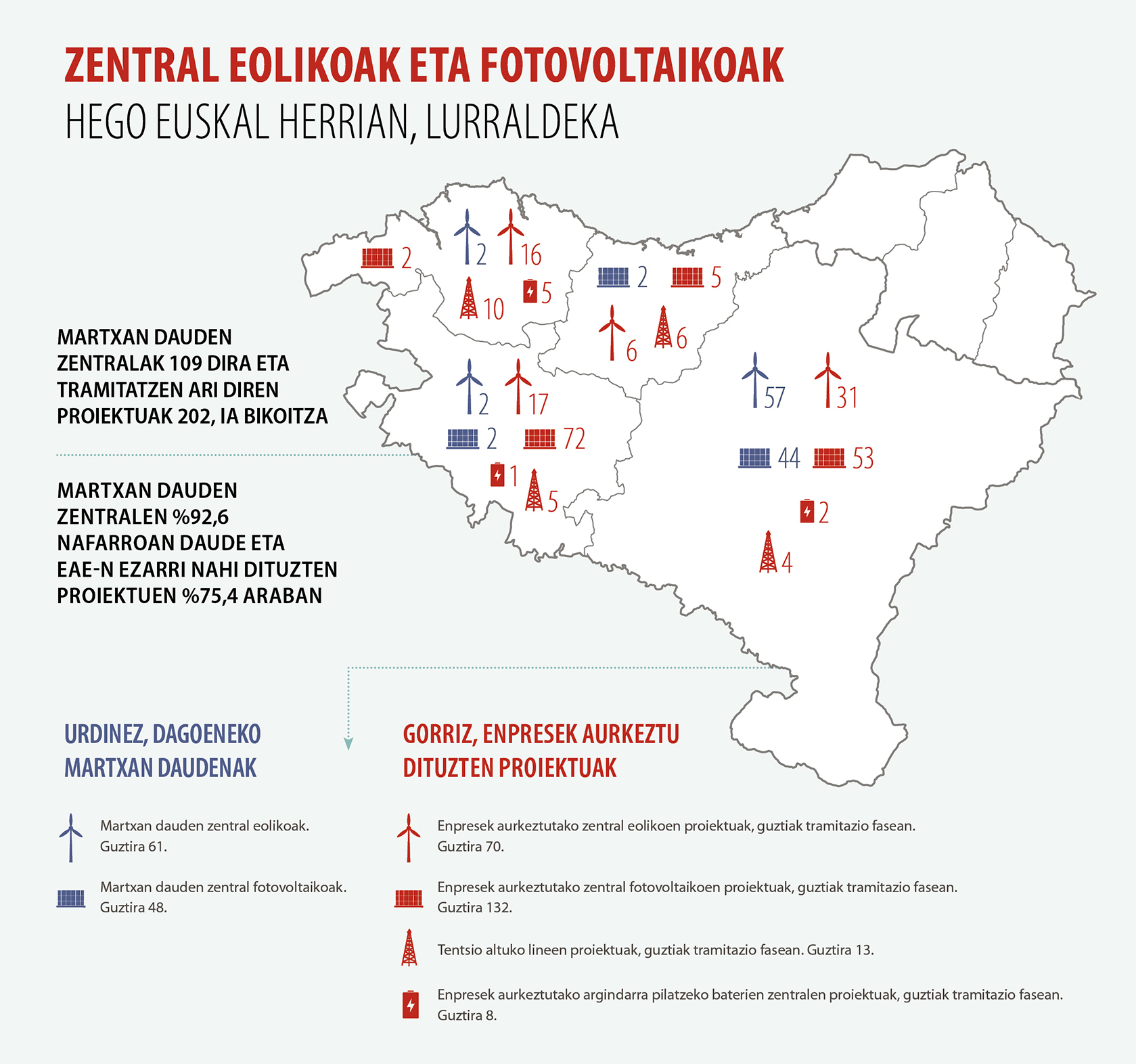
In future, therefore, the Government of Navarra wants to follow the same path as in the last 30 years, with the aim of "energy transition". However, data indicate that for more than ten years the energy consumption in Navarre has been in constant growth, including that of fossil fuels. Greenhouse gas emissions also grow. In Navarre, electricity generation through renewable energy is increasing, while electricity consumption has fallen steadily since 2008. First of all, Subai Erakuntza has read as follows: "These two situations, the increase in fossil consumption and the decrease in electricity, are occurring in Navarre, in what is considered a centre of renewable installations throughout the Spanish state, and is one of the communities that is presented as a model in the field of renewable energies. It can be said that it is one of the many symptoms of what is not working what is known as 'energy transition'."
In view of the ongoing projects in the CAPV and the Sectoral Territorial Plan that is about to emerge, it can be thought that the intention of the Basque Government is to join the same path as Navarre. Are they all needed? In the words of Araba Bizi, "it is interesting to see that among all the projects being processed in Hego Euskal Herria, the maximum power achieved by electricity in the Basque Country is 4,381 MW, higher than the maximum demand (around 3,150 MW)".
Solaria intends to install the plants in Álava through the 24 photovoltaic projects it has in process and directly transfer the generated light to Bizkaia
As for the territorial balance, the data of the article indicate that Álava would be the most "sacrificed" territory of the CAV, although the intention is to transfer some of the electricity to Bizkaia. The projects of high-voltage lines in processing in Hego Euskal Herria are 13 and of them 10 go to Bizkaia: four are between Gipuzkoa-Bizkaia, two between Araba-Bizkaia, two between Bizkaia, one between Araba-Gipuzkoa-Bizkaia and the other between Bizkaia and Navarre. The ones that would not pass through Bizkaia are only three: one inside Navarre, one between Navarre-Gipuzkoa and another between Navarre-Álava. The case of Solaria is paradigmatic in this subject: Photovoltaic plants are installed in Álava and electricity is located directly 100 kilometers from Zierbena (for Petronor to make "green hydrogen"?) To date, 24 projects have been submitted and will be implemented. The Deputy General of Álava, Ramiro González, denounced last May that "it makes no sense for energy to be produced in Álava and consumed in Bizkaia", as it will cause unnecessary damage to biodiversity.
Electricity will be concentrated mainly in Bizkaia, as the battery projects that companies have requested to store electricity, which are currently being processed, are eight in Hego Euskal Herria and five in Bizkaia, two in Navarre and one in Álava.
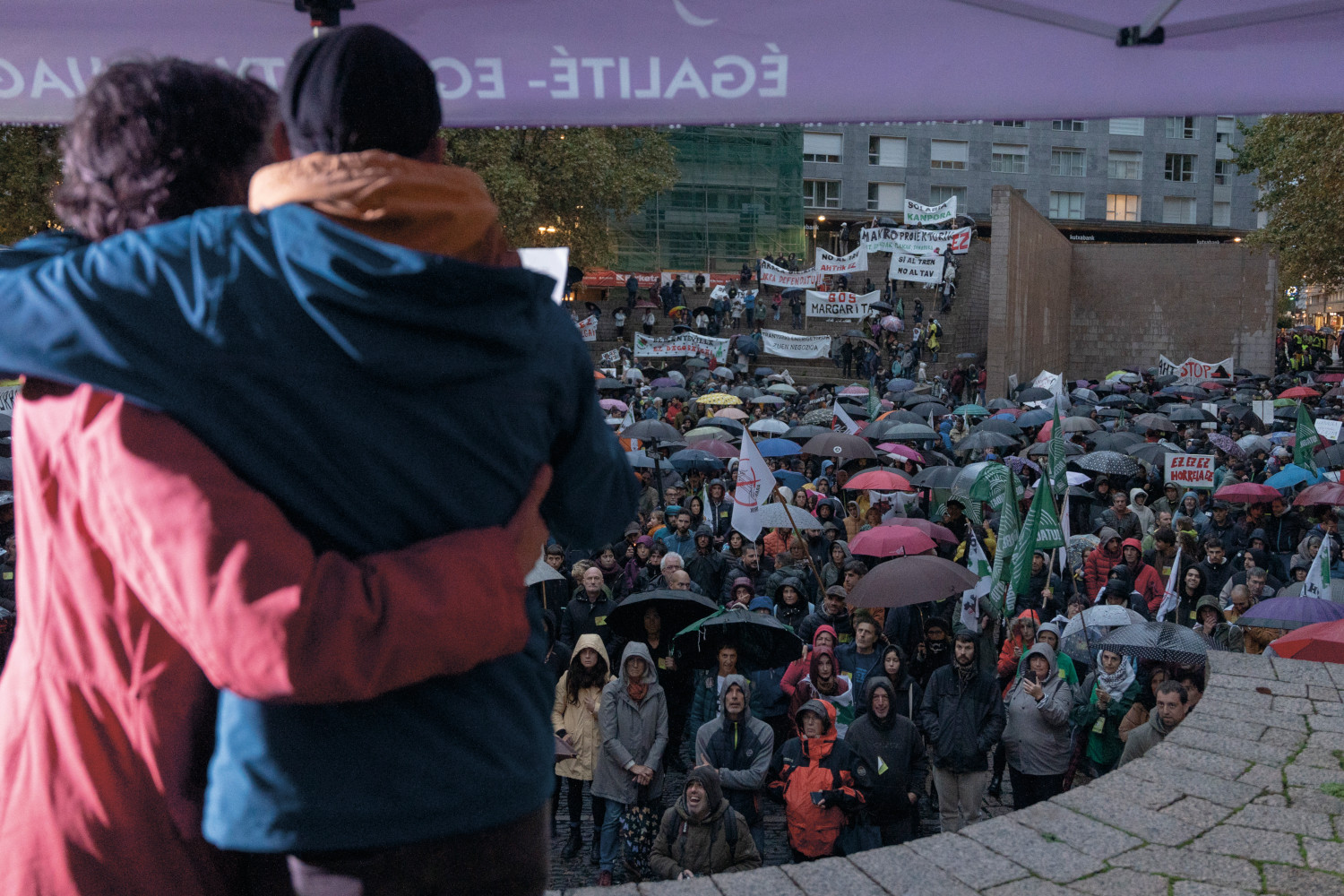
But why in Álava?
That's the question we've asked Iñigo Leza. He is an official ranger and is a member of groups No to the TAV in the Llanada and Araba Bizirik. Leza recalls that a similar situation occurred in the early 2000s: "Then they also tried, but we managed to stop. Three wind power plants were installed in Elgea, Urkilla and Badaia but many other projects were paralyzed, and a second phase has now arrived and a lot of projects are being presented and processed."
It explains why Álava can be attractive to companies: "Regardless of the debate about how much sun it can do more than in other territories, they have also come to Álava because half of the land is communal and it is easier to take a hill in an operation to a village or to a few villages, while in Gipuzkoa and Bizkaia the mountain lands are private and it is more difficult to reach an agreement with many owners to let the mills be laid. In the case of PV plants, in Álava there is a wider area, it is lighter, it is easier to locate in this type of area". He warned that in Álava there are many towns of between 20 and 30 inhabitants and companies find it "very easy" to oppose them.
"According to a study carried out by the University of Madrid, the installation of plates on the rooftops of Vitoria-Gasteiz could account for 38.5% of the total electricity consumption in Álava"
If the logic of macro-projects is abandoned, Leza will be given more suitable locations for the deployment of renewable energies: "Industrial sites already have thousands of hectares of land occupied and, in addition, electricity is spent in factories, so solar panels should be installed in industrial sites. The City Hall of Vitoria-Gasteiz commissioned the University of Madrid a study that said that with the roofs well located in the municipality of Vitoria-Gasteiz, it would be enough to generate 38.5% of the total electricity consumption in the whole of Álava, not only of the homes, but of the total electricity consumption”.
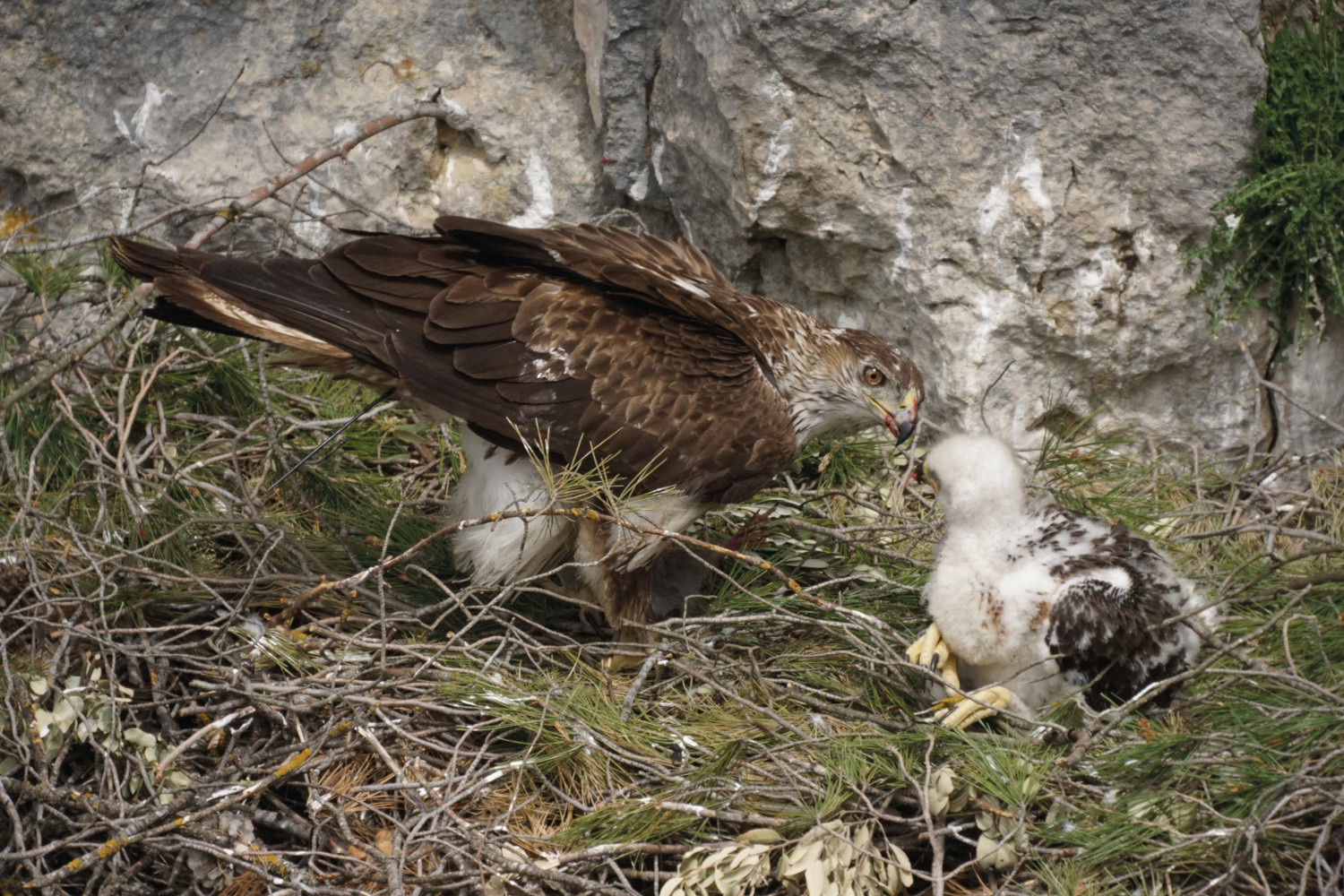
Alavesa land inhabited by multiple living beings
The environmental report by the Basque Government of Álava points to the "critical impact" of the "Laminoria" project lu
The fact that many Alavese lands are communal has brought with it a different management of forests and forests over the centuries, while in other territories where private ownership of forests the main trend has been to prioritize economic benefits. In Leza's words, "in Álava there are a lot of areas that have stayed very well from the point of view of biodiversity, perhaps because they are communal". Thousands of citizens have expressed their pleas to the Basque Government about the specific natural values of each of the areas in which companies intend to implement renewable energy macro-projects. But the Member of Álava also emphasises natural value. Read, on the other hand, the report that ARGIA has recently made available to everyone on the Internet and which until then was kept in the drawer of the Basque Government: on 14 June the Provincial Council of Álava sent to the Basque Government the environmental report of the project of windmill and solar panels "Laminoria" of the company Aixeindar. It says that this place is an ecological corridor, an "air corridor" used by birds. As a sign of the biodiversity in the area, the report points out that the environmental impact of the implementation of wind mills and necrophagous birds in the CAPV would be "critical", which "is not acceptable".
Leza coincides with the Diputación’s diagnosis, but recalls that in the same saw the company Aixeindar (Azazeta) has requested another wind project, and is cautious about the consequences this environmental report will have: "We hope that the Basque Government will listen to the report prepared by the Member on the Laminoria project," he added. But also with the project of the wind power plant in Azazeta, the Council drew a report saying that it would be very serious for these birds, Aixeindar proposed to move three windmills, move 200 meters of location, and with that the project has already been carried out. We hope that both projects will be cancelled, but if not, we will try to paralyse them."
The Alaveses mountains are the area with the most necrophagous birds of the CAPV
The
Iturrieta Mountains and the Vitoria Mountains have the highest density of necrophagous species in the CAPV, that is, the highest concentration of necrophages occurs here. These include the Quebrantabones (Gypaetus barbatus, named “endangered”), the Alimoche (Neophron percnopterus, named “vulnerable”) and the Leonado vulture (Gyps fulvus, named “of special interest”).
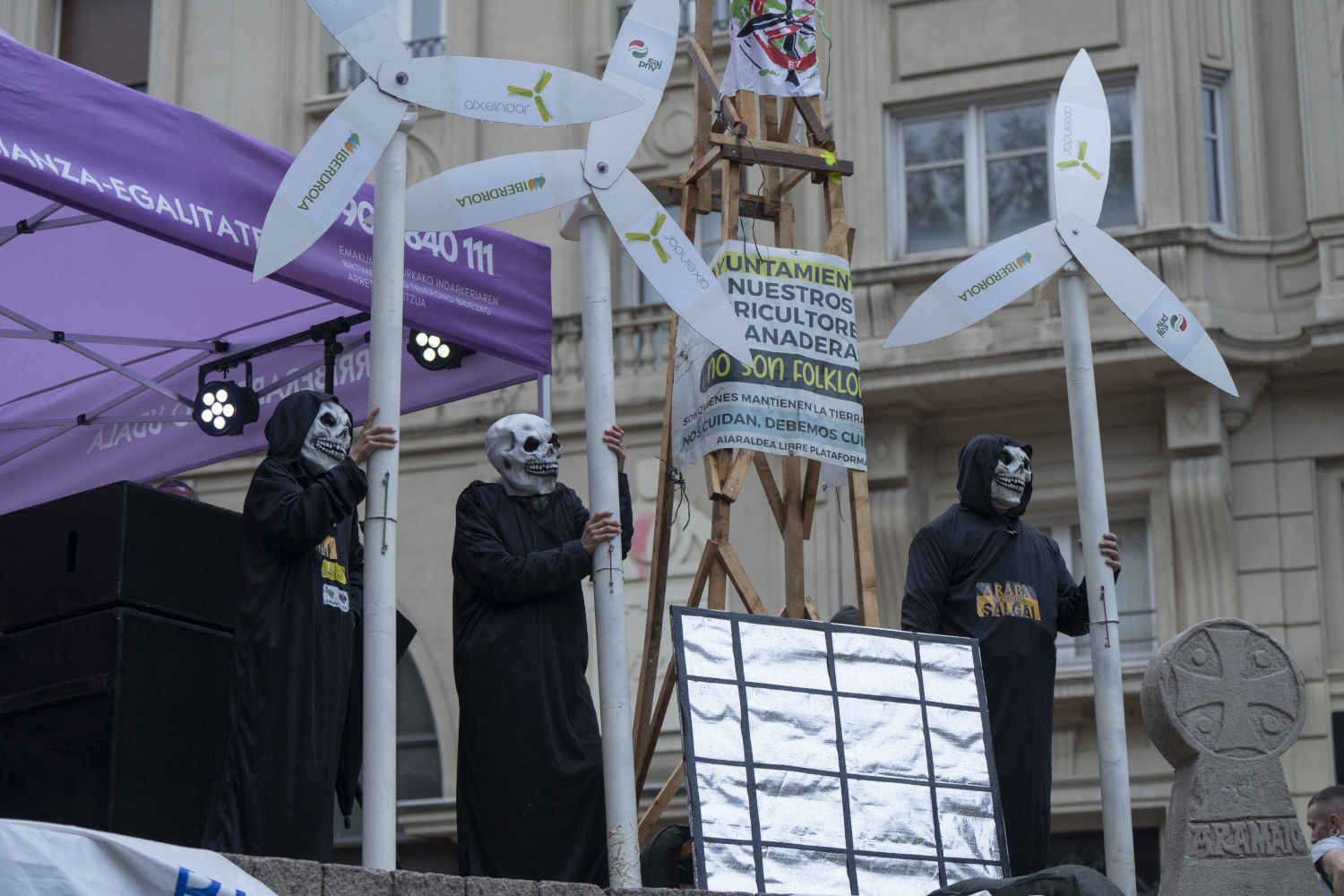
The land that gives us food
91% of the land cultivated in the CAV in 2021 was from Álava
Alongside the contribution of the Alavese lands to biodiversity, the role they play in the food of the Basque Country must be taken into account: According to data produced by Eustat, in 2021 the area cultivated in the CAV amounted to 81,325 hectares, of which 74,501 (91%) were Álava. Grass and fallow land crops occupied a total of 63.125 hectares in the CAV in 2021, of which 60.332 correspond to Álava. It is therefore clear that the transition from Alavese agricultural land to energy will greatly affect the future food sovereignty that the Basque Country may have. In addition to the quantity of land, the climatic conditions it has make the production of food such as oil and cereals essential: According to Eustat, in 2020, 20,335 hectares of wheat, 17,194 of barley and 5,428 of oats were cultivated in Álava, and none in the rest of the CAV. In the case of olive trees, in 2021, 210 hectares were cultivated in Álava, seven in Gipuzkoa and two in Bizkaia.
"Placing the plates on cultivated land eliminates food land and generates speculation," Iñigo Leza
Leza explains that PV plants can lead to the loss of farmland: "Its implementation on agricultural land will have very serious consequences for food sovereignty. On the one hand, it removes the land for food and, on the other hand, it creates speculation, because farmland is paid as if it were industrial; many farmers are on rent and the rent price rises, and so small farmers have to leave their jobs. In the end, there is still less in hand a diet that is already in very few hands".
Leza explained that the reduction in agriculture and the industrialization of the mountains make the rural environment even more displaced: "There is a trend towards eviction from rural villages over 60 years ago. A lot of people go to cities. Not just in Álava. This is because people are unable to work in the village, because agriculture is concentrating on few hands. But we think this trend is accentuating, because that's how it's easier to remove them, because if we're less in the territory, it's harder to defend them." We understand that going to the city in search of work, but we find it more difficult to see the connection that macro-projects can have directly with the eviction of their peoples: "After all, the field is being industrialized. The people who lived in the countryside that saw the first mountain, when they were going for a walk felt part of nature, but as these projects advance and place them so close to the towns, the citizen is in an industrial estate: the one born there may be conserved, but the descendants tend to go to the cities. It is a trend that we have been observing for a long time.
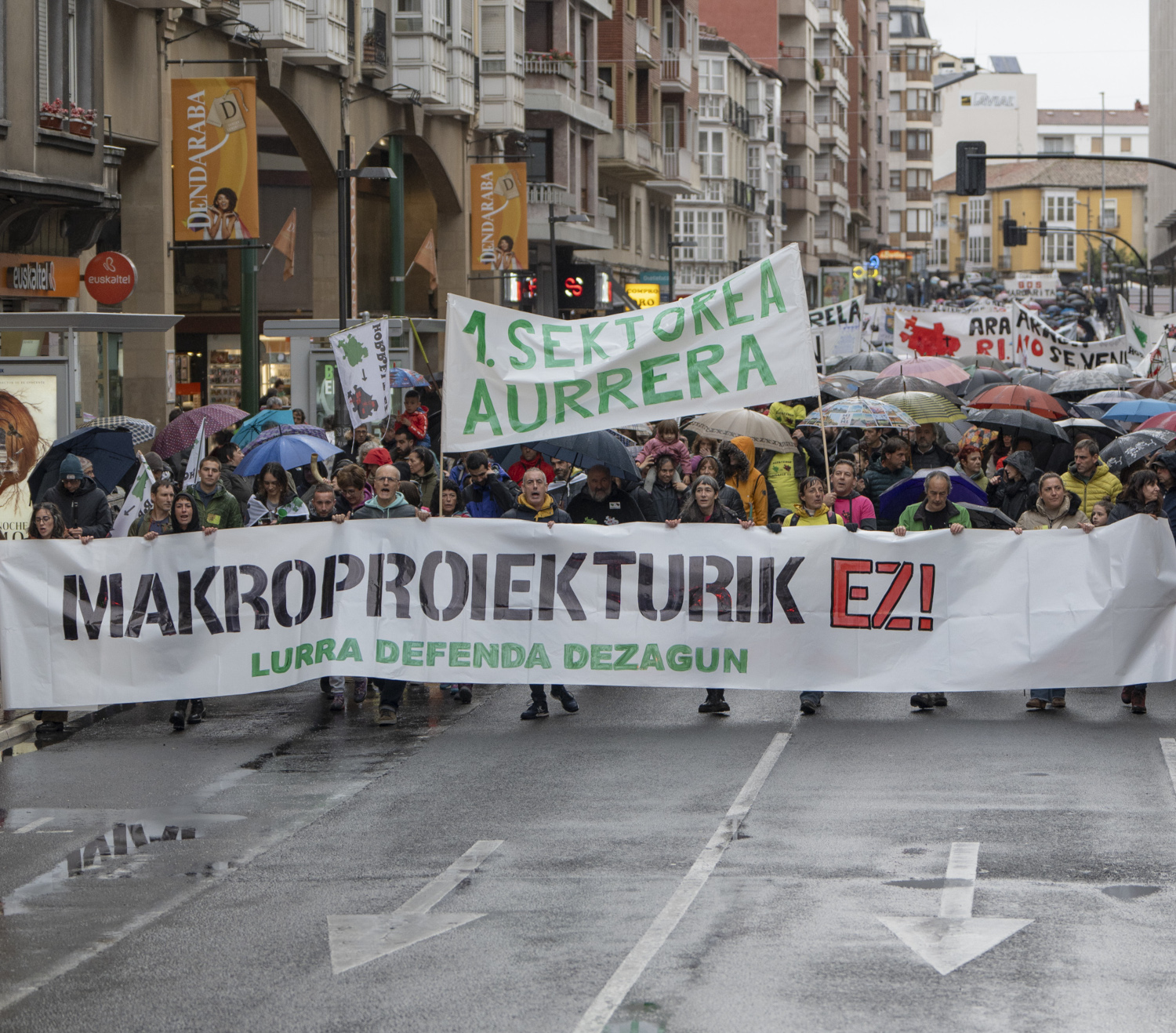
Movement
Cities and mountains, the struggle for land and territory is gradually spreading in Euskal Herria, at the same time as macro-projects, whether renewable or not.
In Álava the struggle is organized and articulated at various levels. An example of this is the demonstration convened on 26 October in Vitoria-Gasteiz under the slogan 'No to the macro-projects', which had 17 participants, including groups opposed to the TAV, groups Hala Ez, Bizirik, farmers and food related agents (Bionekazaritza, UAGA syndicate, movement for Food and Sustainable Food, Trearaba).
"There are a lot of people who are angry and willing to defend the territory," Iñigo Leza
Leza says that in rural areas most people are against these projects: "There are a lot of people who are very angry and willing to defend the territory. A third of the Alavese people join the demonstration, but it must be borne in mind that many did not have time to meet and that some deliberately joined in agreeing to join. In the city, people aren't as aware of what this kind of project would mean, and there's a lot of propaganda that presents these projects as a solution to climate change."
"We have to radically change the system and we have to reduce the consumption of energy and materials, yes or no," Iñigo Leza
Leza, assuming the motto "renewables yes, but not so," said that the solution to the climate emergency is in another direction: "It is clear that this system has no future, because to grow and grow it has to be continuously consuming more energy. But there will come a time when there will be no room to produce more energy. We must radically change the system and reduce the consumption of energy and materials, yes or no. Renewables will play a central role in the future, but they will do so by modifying the system, decentralising energy production and placing themselves in already man-made areas, such as the roofs of industrial sites and households".